
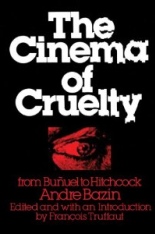 My introduction to vaulted film critic André Bazin, co-founder of the influential and revolutionary Cahiers du Cinéma, arrived as yours should: via The Cinema of Cruelty, Arcade Publishing’s trade-paperback reprint of the 1975 text collected and edited by François Truffaut, who knew something about the medium himself.
My introduction to vaulted film critic André Bazin, co-founder of the influential and revolutionary Cahiers du Cinéma, arrived as yours should: via The Cinema of Cruelty, Arcade Publishing’s trade-paperback reprint of the 1975 text collected and edited by François Truffaut, who knew something about the medium himself.
Both Frenchmen, the director and his subject were unofficial members of a mutual appreciation society, but Cruelty finds Bazin, who died in 1958 at the age of 40, discussing six other legendary filmmakers: Erich von Stroheim, Carl Dreyer, Preston Sturges, Luis Buñuel, Akira Kurosawa and Alfred Hitchcock.
The latter makes up the bulk of the material, which is great for two reasons:
1. Hitchcock is my favorite director.
2. Hitchcock is not Bazin’s favorite director. In fact, the film theorist wasn’t exactly into him at all, at least not at first. Because Truffaut presented select essays and reviews Bazin penned on the master of suspense chronologically, we have the pleasure of witnessing Bazin’s slow progression from disdain to being won over.
Seriously, this is to the degree Bazin’s dislike began (italics added for emphasis): “Since 1941, Hitchcock has contributed nothing essential to cinematic directing. Mentioning his name along with that of Orson Welles or William Wyler (which I have also been guilty of doing) as one of the principal champions of Hollywood’s avant-garde, stems from an illusion, a misunderstanding, or a breach of trust. … But just between us, we’ve been had.”
When Bazin finally came around, it was to praise 1953’s I Confess, oddly enough, which most of the world considers minor Hitch at best.
However, I’d argue that such unpopular opinions — call them “quirks,” if you wish — help made Bazin unique and cement his global reputation. The man clearly harbored undying love for the art form, then still in somewhat of an infancy, and his passion is reflected in lines like, “If Buñuel made films exactly as he wished, the screen would undoubtedly burst into flames at the first screening!”
While I dislike the occasional style of “Now I will address this …” guideposts, there’s no denying his status as a giant in the field. He was an important voice silenced too soon, and The Cinema of Cruelty was and remains an important book that I hope wins him new fans — beyond myself, mind you. —Rod Lott

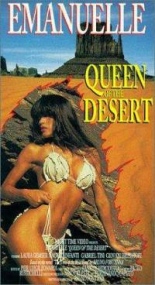
 Indonesian beauty Laura Gemser (
Indonesian beauty Laura Gemser ( And that, ladies and gentleman, is how you get to be Queen of the Desert.
And that, ladies and gentleman, is how you get to be Queen of the Desert. 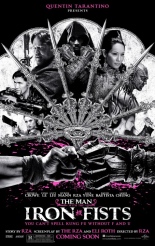
 In his directorial debut, Wu-Tang Clan leader RZA distills what’s so enjoyable about 1970s kung-fu films into one spectacular, outlandish romp — a greatest-hits collection of Black Belt Theater fare. In turn, story is secondary to the all-out circus of slaughter, if not incidental altogether. Revenge is the name of
In his directorial debut, Wu-Tang Clan leader RZA distills what’s so enjoyable about 1970s kung-fu films into one spectacular, outlandish romp — a greatest-hits collection of Black Belt Theater fare. In turn, story is secondary to the all-out circus of slaughter, if not incidental altogether. Revenge is the name of  That’s far more setup than the film needs. With all the chess pieces in place — and they number many more — RZA delights in having them knock each other down with feet and fists of fury, and specially crafted weapons that make the
That’s far more setup than the film needs. With all the chess pieces in place — and they number many more — RZA delights in having them knock each other down with feet and fists of fury, and specially crafted weapons that make the 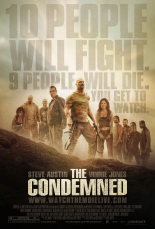
 On the scale of action heroes, a huge leeway is given for personal charisma. Talent hopefully plays a part, but personality carries the day. So, in the top tier, we find such charismatic ass-kickers as Arnold Schwarzenegger, Sylvester Stallone, Harrison Ford, Clint Eastwood and Dwayne Johnson: men with widely varying degrees of acting skill, but there’s no denying they have the goods.
On the scale of action heroes, a huge leeway is given for personal charisma. Talent hopefully plays a part, but personality carries the day. So, in the top tier, we find such charismatic ass-kickers as Arnold Schwarzenegger, Sylvester Stallone, Harrison Ford, Clint Eastwood and Dwayne Johnson: men with widely varying degrees of acting skill, but there’s no denying they have the goods.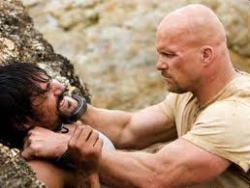
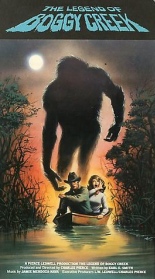
 Hollywood set decorator Charles B. Pierce ventured into the directing/producing game with
Hollywood set decorator Charles B. Pierce ventured into the directing/producing game with 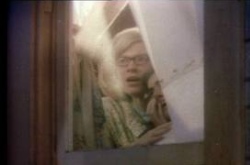 With a poetic lilt that sounds like he should be reciting Rod McKuen verse, Vern Stierman narrates the movie, driving what little story there is: that a monster from the Texarkana swamps roams free. Typical of his voice-over: “Excitement in the community reached a peak when a farmer named O.H. Kennedy discovered these strange, three-toed footsteps in Willie Smith’s bean field.”
With a poetic lilt that sounds like he should be reciting Rod McKuen verse, Vern Stierman narrates the movie, driving what little story there is: that a monster from the Texarkana swamps roams free. Typical of his voice-over: “Excitement in the community reached a peak when a farmer named O.H. Kennedy discovered these strange, three-toed footsteps in Willie Smith’s bean field.”